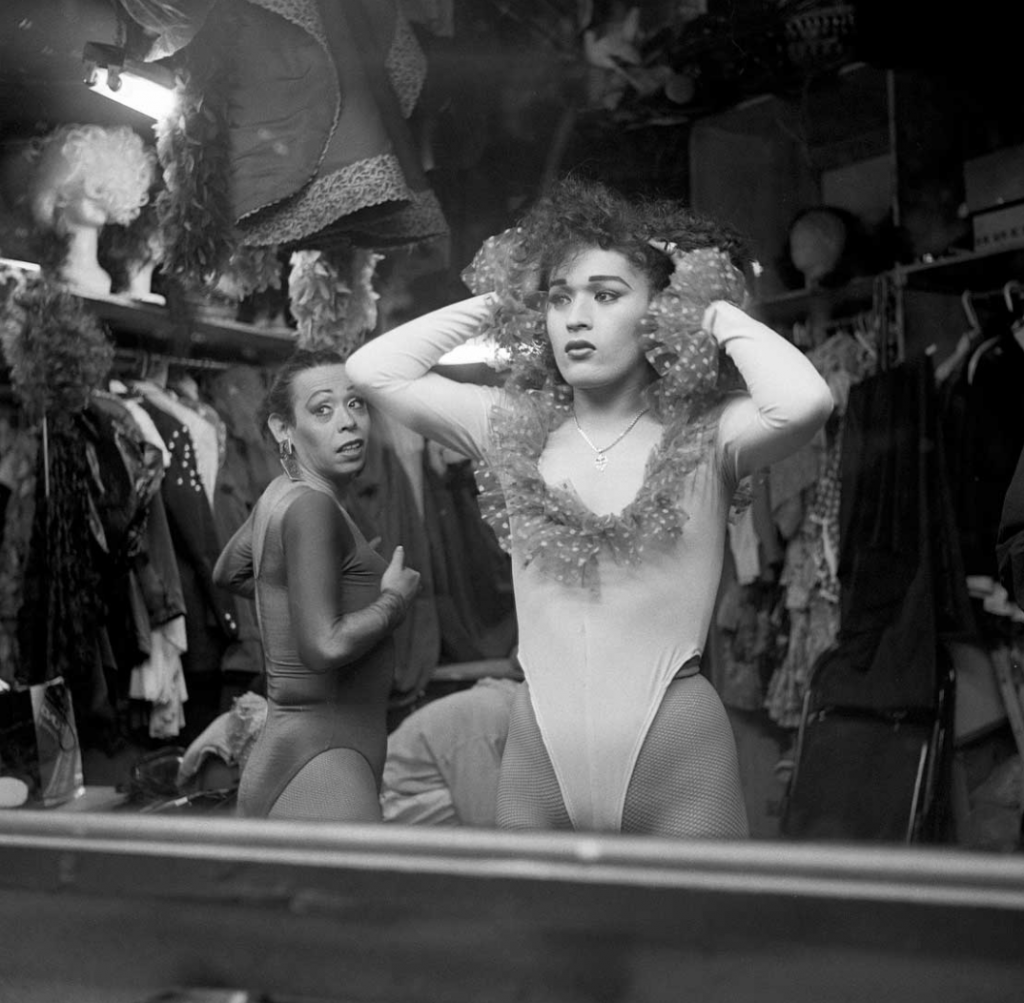Eve Kaufman ’20
Staff Writer
Reynaldo Rivera, a prominent figure in Latinx drag nightlife throughout the 80s and 90s, opened up about his experiences in an event on March 12 called Disappearing Los Angeles. Chris Kraus, the recipient of this years Mary Routt chair for writing, invited Rivera and hosted the event. Fans of Rivera and Claremont students alike gathered together in Balch auditorium to become privy to a life of art, drugs, and glamour that was the Latinx drag scene in the 1990s and Rivera’s universe.
His world existed in a Los Angeles prior to avocado toast and Instagram. Parties, spotlights, and the stage — all these elements typically concoct a quintessential Hollywood experience. Ironically, Rivera’s life was so far from that.
Los Angeles is known for its eccentricities. It is known for its collaborations, its neighborhoods, and its de facto art collectives amidst creatives living within close proximity to one another. But what Los Angeles is and is not is of peripheral importance to Rivera. He does not write, or even speak very much of such things — defining LA for any reason in any way seems futile to Rivera. Rather, it is through his work of photographs documenting his lived experiences, that is his modus operandi. They convey an often debauch narrative, one integral to, but not expected of the greater Los Angeles narrative. One that is uniquely queer, Latinx, and creative.
Rivera’s work, without intent, melds binaries into an ephemeral notion no longer tangible or relevant. Definitions of gender, time, and place, through the content and context of his photos, are what truly disappear. Though in presenting, he is never quite certain when or where a photograph is from, he still shows a thoughtful composition of whatever landscape unfolded before his eyes. Often vivid moments of queens dressed up and ready to perform, stationed somewhere between the Latinx community in Los Angeles and Mexico City, though Rivera is not too concerned with which. The people amidst both, who are always different, are also always characters of the same.
Another challenge to norms of contemporary photography, Rivera’s collection is exclusively of black and white stills. This in part contributes to its sense of timelessness, and furthermore the blending of boundaries — after all, black and white photos at the end of the day are truly grayscale. The grayscale makes you question the year it was created: 1995 or 1920? The subject matter, between the garish costumes, long boas and gemstones galore, do not provide an accurate date either. And that’s what makes the viewer simply accept what it is. Time doesn’t matter, place doesn’t matter.
Rivera’s choice in this matter, however, was comically an economic one. Color is expensive! But the emotion it brings is real. The editing on the stills are also incidental, as it should happen. Having survived three fires, two of which were accidents, the negatives in his collection are often singed around the edges and grainy in nature, adding a grit which is honest in its nature. This was no superimposed, deliberate feature. This was the result of wear and tear from Rivera’s daily life.
Simple moments, ones unpretentious and fleeting, are Rivera’s favorites. He takes to ones that are relatable to any person looking upon them. A picture of a woman waving out of a car, taken from the passenger’s seat of his own — they are friends and bumped into each other (not literally) while driving. A second so candid, Rivera cherishes it to the extent that its the last in his book.
When Rivera says his Los Angeles is disappearing, he simultaneously asks the question of how something that never was, could only now no longer be. The scene Rivera found himself in was one of circumstance. Nobody joined it with intention. Instead, they fell into it, and left just as abruptly as they came, from circumstances tragic or convenient. Rivera’s world was a transitional one, the people in his life were apparitions, moments in photos. Now memorialized in “Salvage,” a book project Rivera embarked on with the help of Chris Kraus, the subjects are glorified, and live on within the auspices of the LA Rivera knew.
The unspecific nature of all these photos, the sort of distance total anonymity provides, juxtaposed to the degree of intimacy the pictures engender, adds to the paradox that is inherent to the set. This can never exist again, but it will also never die.



